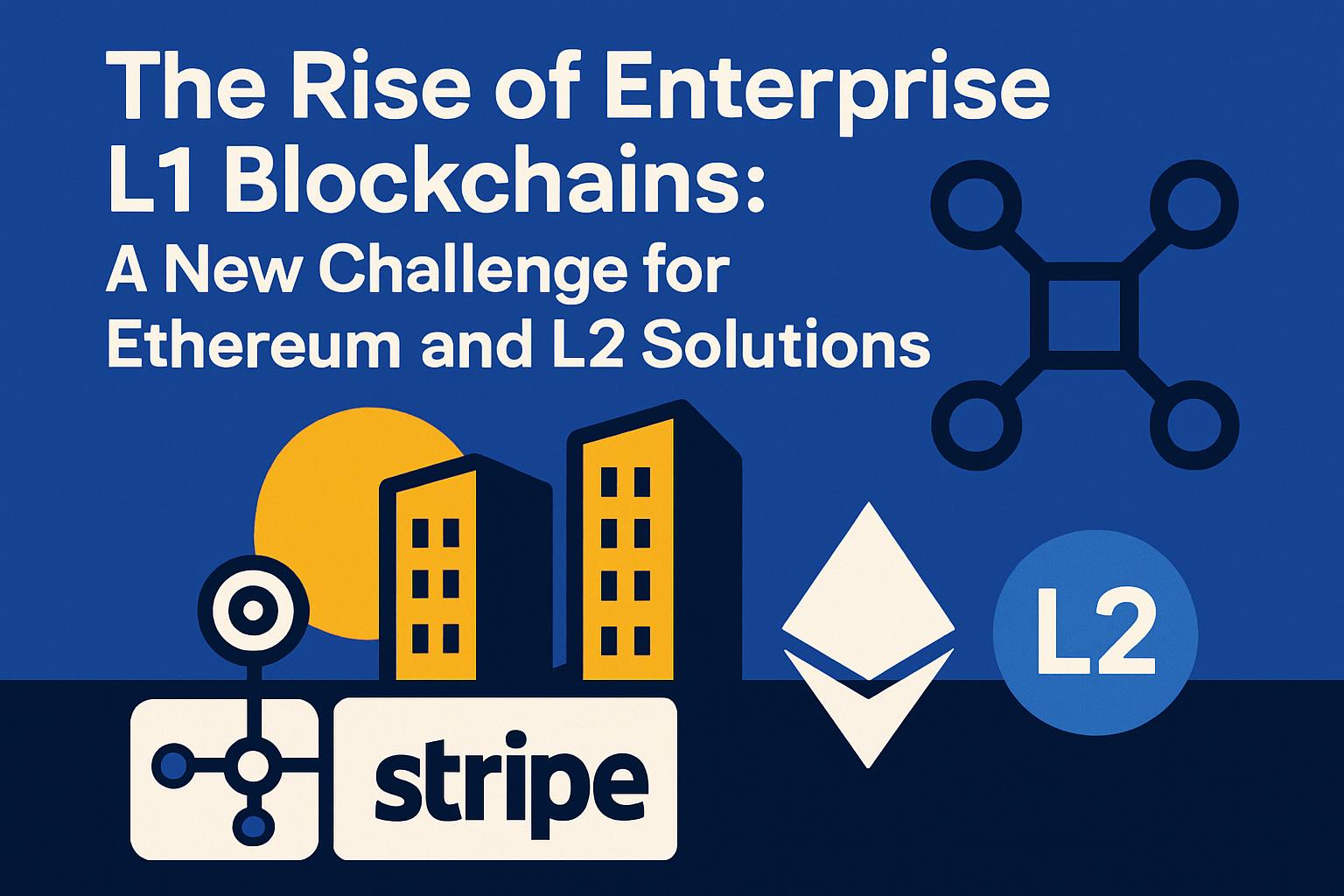
In a move that’s sending ripples across the cryptocurrency industry, major companies like Circle and Stripe are unveiling their own enterprise-level Layer 1 (L1) blockchains. These developments are triggering debates around the traditional choice of Ethereum and Layer 2 (L2) scaling solutions. While it may seem surprising, from a business perspective, the decision for corporations to build their own blockchain solutions revolves around the fundamental advantages of vertical integration, predictability, and control.
The Appeal of Vertical Integration for Enterprises
The launch of new L1 blockchains by Circle, known for their USDC stablecoin, and Tether, with their Stable blockchain, exemplifies a significant trend. By creating and maintaining their own blockchains, these organizations minimize reliance on external platforms, ensuring greater autonomy over their tech stacks. As Ethan Buchman from Cosmos highlights, predictability and control are of paramount value in enterprise settings.
This explains why some companies are veering away from deploying on Ethereum or L2 technologies. For senior decision-makers, L2 solutions introduce complexities that can be challenging to convey to shareholders and regulators. In contrast, seasoned L1 blockchains offer a more comprehensible architecture, reflecting years of development and industry trust.
Shifting Priorities: From Provenance to Payments
The enterprise blockchain narrative is evolving. Previously focused on supply chain traceability and inter-company transparency, today’s requirements are dominated by efficient global payment processing. Barry Plunkett, Co-CEO of Interchain Labs, notes that traditional database systems could address earlier needs. However, the current scenario highlights the inefficiencies in global payment systems—high transaction costs, long settlement times, and associated risks—driving enterprises toward blockchain solutions.
Companies like Airbnb and Uber benefit significantly from blockchain-based payment structures, cutting expenses while enhancing transaction experiences for users and employees alike. As regulatory frameworks for stablecoins mature in countries like the U.S., businesses are increasingly confident in adopting digital currencies like the digital dollar for both holding and transacting.
L1 Versus L2: Familiarity, Risk Management, and Interoperability
Why do enterprises lean towards L1 rather than L2? Barry outlines three core reasons:
- Familiarity and Maturity: Decision-makers familiar with legacy blockchains like Bitcoin and Ethereum find the complexity of new technologies like rollups less appealing.
- Risk Minimization: Tethering operations to a single network like Ethereum or Solana—with its ongoing governance uncertainties—poses risks enterprises want to avoid. Companies prefer spreading their tech dependencies, akin to how they choose multiple cloud providers.
- Control and Interoperability: Open L1 platforms permit greater control and enable businesses to incorporate compliance measures such as KYC/AML within their environments, maintaining liquidity and connectivity with the wider crypto ecosystem.
This strategic approach balances security and compliance needs while maintaining links to Ethereum’s extensive ecosystem through Ethereum Virtual Machine (EVM) compatibility.
Ethereum’s Challenge: Erosion or Enhancement?
The emergence of enterprise-specific blockchains like Circle Arc and Stripe Tempo is sparking varied opinions within the Ethereum community. Proponents argue that these chains’ EVM compatibility will eventually channel liquidity back to Ethereum, enhancing its network. Critics, however, fear that if transactions and settlements occur largely within corporate ecosystems, Ethereum’s role as a settlement layer will weaken.
Ultimately, the impact on Ethereum hinges on the openness of these enterprise chains. If they approach a more open, interconnected architecture and leverage cross-chain protocols to disseminate liquidity, Ethereum’s prominence as a hub for interoperability could strengthen, bolstered by tools like Circle’s Cross-Chain Transfer Protocol (CCTP).
Regardless of the outcome, enterprises will base decisions on commercial viability rather than ecosystem loyalty. As demonstrated by innovative companies forgoing single partnerships in favor of more advantageous ones, business interests prevail.
The Future of Enterprise Blockchain: Can Ethereum Hold Its Own?
We’re witnessing not just isolated events, but a burgeoning trend. Barry reveals that numerous Fortune 500 companies are contemplating their own L1 blockchains. Unlike previous attempts, today’s landscape benefits from established stablecoin infrastructures, clear payment use cases, and increasingly defined regulatory environments. This solid foundation transforms enterprise blockchains from a nebulous concept into a tangible solution that delivers cost reduction and value.

![[News] Bitcoin at a Turning Point? 10x Research Signals a Bullish Macro Shift Ahead](https://cryptoexplores.com/wp-content/uploads/2025/06/new20250616.jpg)
![[News] Binance Lists $HOME, the Gas-Free, Bridge-Free All-in-One DeFi App](https://cryptoexplores.com/wp-content/uploads/2025/06/news20250617.jpg)